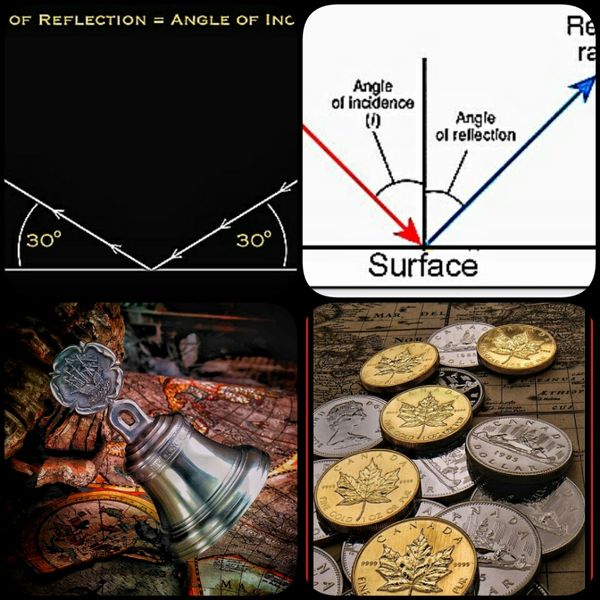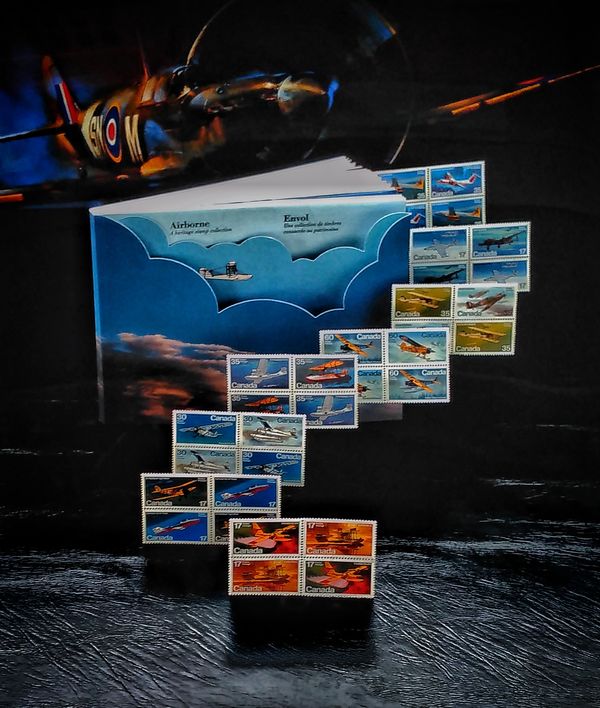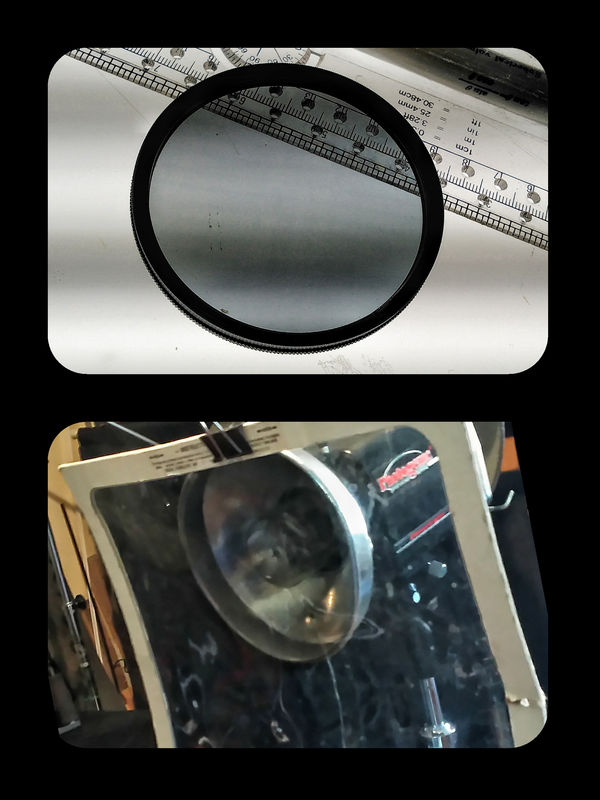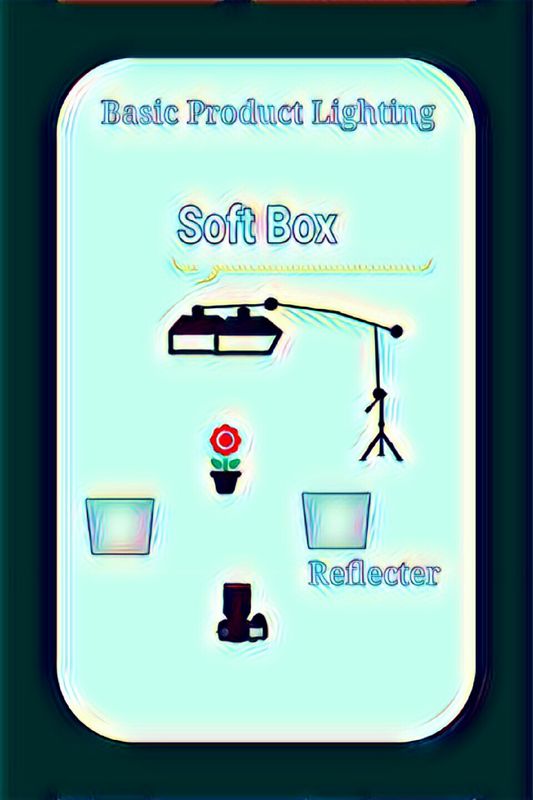Coming Soon! Tutorial on Metallic Objects.
Oct 1, 2017 15:44:11 #
It' s in the works. Learn about shooting objects with highly polished reflective and other problematic surfaces.

Oct 1, 2017 16:06:12 #
Cool. I'm looking forward to that.
--Bob
--Bob
E.L.. Shapiro wrote:
It' s in the works. Learn about shooting objects with highly polished reflective and other problematic surfaces.
Oct 1, 2017 17:27:32 #
jdubu
Loc: San Jose, CA
rmalarz wrote:
Cool. I'm looking forward to that.
--Bob
--Bob
Absolutely, can't wait for your shared expertise. I can't learn enough about this subject!
Oct 2, 2017 16:20:44 #
Does polarization filters have any role in this kind of photography. Reflected light is always polarized to one extent to another.
Oct 2, 2017 17:54:53 #
jdubu
Loc: San Jose, CA
John_F wrote:
Does polarization filters have any role in this kind of photography. Reflected light is always polarized to one extent to another.
I've never used CPLs when shooting reflective surfaces, relying on diffusion, flagging and bounce placement. So I work to get the ones I want and flag or PP the ones I don't.
Here is my post from last year regarding glass reflections. I was shooting a new wine cellar for our portfolio and decided to do a detail shot for the client. Didn't bring my tabletop case, but used a couple of LED lights and a white foam core board. Sort of a fly by the seat of my pants quick attempt.
http://www.uglyhedgehog.com/t-367013-1.html
As to whether or not to use CPLs, I haven't since I can have multiple light sources and directions for a set up, the CPL could have unintended consequences on another source of light. But maybe next time I will try it and see if what I think is true.
Oct 2, 2017 20:57:20 #
Oct 3, 2017 18:15:02 #
Excellent Question!
Polarizing filters are important tools in product photography, however they must be used judiciously in terms of finite reflection control.
Simply stated, there are good and bad reflections or highlights. Well placed specular and diffused highlights add SPARKLE to certain subjects, create dimension and modeling as per the play of light and shadow and give shape and mass to many elements in a photographic composition. Elimination of theses GOOD highlights or reflections can result in flat lackluster images. Bad or unwanted reflections or highlights are he ones that show up in areas of the composition where they become distracting, draw the viewer's eye away form the motif of the image, obscure or burn out important details or cause a disunity of lighting.
The use of a polarizing filter can remedy SOME of theses issues, however, they can not usually solve problems caused by badly placed lighting. This is where the angle of incidence theory, that I have emphasized in my tutorial on product photography of metallic objects, comes into play. Whether or not an unwanted reflection can be subdued or eliminated by use of a polarizing filter
is dependent upon the angle at which the reflecting light source is striking the subject an angle of 56 degrees is where maximum polarization takes place. Rather that worrying abut about the geometry, simply viewing the scene or set through the camera with the filter in place on the lens and carefully observing its effect on both the desired and offending reflections as you rotate the filter in its mount will allow you to pre-visualize the total effect. This visual procedure will will tell the story. Incremental movements in the main or offending light source will alter the effect.
There will be a range of polarization form maximum to minimum and you may decide on any intermediate degree of polarization that you prefer.
Polarizing filters have little or no effect on metallic reflections. I can write all kinds of techno-babble about linear polarization of rays of light but suffice it to say that with all modern digital cameras a CIRCULAR POLARIZING FILTER required to do get the effects while maintaining all of your camera's
automatic features. The old linear polarizing filters can cause inaccuracies- they don't damage anything, they just cause interference when they are used.
Aside form controlling noticeable reflections and highlights in various surfaces, polarizing filters are very helpful in preserving or accentuating color saturation. Many materials and natural products have reflective surfaces that are very susceptible color de-saturation due to general glare. Theses surfaces do not necessarily show specular highlights, hot spots or strong reflections but at certain angles of incidence from the main light source, they tend to loose their chroma or rich color. Some example are foliage, many plastic materials, printed matter on clay coated stocks and may other materials. When the product or material is lighted by a broad general light source such as a large soft-box or out of doors under hazy skylight to open shade, it becomes difficult or impossible to control the precise angle of incidence so the problem can not be solved by altering the lighting or the position or angle of the subject. In theses situations the polarized is pure magic! As you rotate the polarizer, you will observe immediate improvement in color saturation and again, you can decide upon various degrees of the effect. This is nothing new to architectural, nature and landscape photographers as they routinely use their polarizing filters all the time to cut down on glare from windows and glass surfaces, water and foliage and darkening sky-scapes but theses advantages may be overlooked by photographers who are new to still life and product photography in studio or artificial lighting environments.
The polarizing filter, by itself, can be a very powerful tool in reflection control but there is more. The system of cross-polarization entails polarizing the light source(s) in addition to using a polarizer on the lens. Polarizing screens are available in various sizes and frames and can be easily fitted to a wide variety of parabolic reflectors and medium size soft boxes. The ones I use are made of acetate and are mounted in cardboard frames. They are somewhat costly but the are indispensable lifesavers and time savers when it comes to difficult reflection issues. Mine are 25 years old and are looking kinda ragged but they still work perfectly. I use them extensively in making art reproduction of of works in many highly reflective and sometimes irregular surfaces and mediums, especially old oil paintings with many layers of glossy varnish and items that are framed behind glass and can not not be safely unframed. I also keep the screens on had for exceptionally difficult product shots where reflection management is extremely problematic and the bad glare, and every effort not withstanding, just doesn't wanna go away. For still life and product work, usually one polarized light is sufficient along with reflector fill. For copy work of flat subjects, line copy, paintings most artwork and copying of old photographs for restoration, 2 polarized lights, equidistant from the subject at 45 degrees at each side of the subject. The lights must be polarized or oriented in the same direction- the frames on the polarizing screens have index marks for that purpose.
The reproduction of the painting, posted here, is a 60X80 inch centuries-old oil on canvas with a glossy but irregular Damar type varnish with many dips and bumps in the canvas. Under non-polarized lighting the image was badly obscured by reflections and other interference. Two lights with polarizing screens were employed in the aforementioned 45 degree configuration with a polarizer on the camera. Each lamp head drew 1200 watt-seconds from 2400 w/s Speedotron power pack. An incident light reading was made at 4 corners of the painting and indicated an exposure at f/11. at ISO 25. The camera was set at ISO 100 to compensate for the filter factor. The reading was taken with the polarizing screens in place so the light absorption is already factored in.
The POSTAGE STAMP COLLECTION AND ALBUM were photograph for a philatelic catalog, brochures and posters. The stamps were printed on a clay-coated stock that was very reflective. A polarizing filter was used to restore the color saturation in the products. A large soft box was suspended over the set and aimed downward from slightly behind the products and feathered forward. Silver reflector provided the fill lighting. The spill from the main light illuminated the background and projected enough light forward to strike the reflectors. The bad reflections on the stamps were eliminated but the good highlights on the die-cut of the album and the black textured area the foreground remand intact because of the differential in the angles of incidence. For a more three-dimensional effect, the stamps were mounted on little Foam-Cor backings and a rack was made of cloths-hanger wire to support the stamp display. There was no cut and paste or PhotoShop work involved.
The use of polarizing filters with or without cross-polarization can be employed in effectively photograph many items and surfaces. Many types of reflection can be controlled or eliminated whiteout sacrificing surface textures and details. It is not a cure-all and if over applied, it can be detrimental to highlight effectiveness. I find it especially useful in photographing furniture or flooring with distinctive wood grain, certain leathers and granite or Formica type materials and finishes.
Polarizing filters are important tools in product photography, however they must be used judiciously in terms of finite reflection control.
Simply stated, there are good and bad reflections or highlights. Well placed specular and diffused highlights add SPARKLE to certain subjects, create dimension and modeling as per the play of light and shadow and give shape and mass to many elements in a photographic composition. Elimination of theses GOOD highlights or reflections can result in flat lackluster images. Bad or unwanted reflections or highlights are he ones that show up in areas of the composition where they become distracting, draw the viewer's eye away form the motif of the image, obscure or burn out important details or cause a disunity of lighting.
The use of a polarizing filter can remedy SOME of theses issues, however, they can not usually solve problems caused by badly placed lighting. This is where the angle of incidence theory, that I have emphasized in my tutorial on product photography of metallic objects, comes into play. Whether or not an unwanted reflection can be subdued or eliminated by use of a polarizing filter
is dependent upon the angle at which the reflecting light source is striking the subject an angle of 56 degrees is where maximum polarization takes place. Rather that worrying abut about the geometry, simply viewing the scene or set through the camera with the filter in place on the lens and carefully observing its effect on both the desired and offending reflections as you rotate the filter in its mount will allow you to pre-visualize the total effect. This visual procedure will will tell the story. Incremental movements in the main or offending light source will alter the effect.
There will be a range of polarization form maximum to minimum and you may decide on any intermediate degree of polarization that you prefer.
Polarizing filters have little or no effect on metallic reflections. I can write all kinds of techno-babble about linear polarization of rays of light but suffice it to say that with all modern digital cameras a CIRCULAR POLARIZING FILTER required to do get the effects while maintaining all of your camera's
automatic features. The old linear polarizing filters can cause inaccuracies- they don't damage anything, they just cause interference when they are used.
Aside form controlling noticeable reflections and highlights in various surfaces, polarizing filters are very helpful in preserving or accentuating color saturation. Many materials and natural products have reflective surfaces that are very susceptible color de-saturation due to general glare. Theses surfaces do not necessarily show specular highlights, hot spots or strong reflections but at certain angles of incidence from the main light source, they tend to loose their chroma or rich color. Some example are foliage, many plastic materials, printed matter on clay coated stocks and may other materials. When the product or material is lighted by a broad general light source such as a large soft-box or out of doors under hazy skylight to open shade, it becomes difficult or impossible to control the precise angle of incidence so the problem can not be solved by altering the lighting or the position or angle of the subject. In theses situations the polarized is pure magic! As you rotate the polarizer, you will observe immediate improvement in color saturation and again, you can decide upon various degrees of the effect. This is nothing new to architectural, nature and landscape photographers as they routinely use their polarizing filters all the time to cut down on glare from windows and glass surfaces, water and foliage and darkening sky-scapes but theses advantages may be overlooked by photographers who are new to still life and product photography in studio or artificial lighting environments.
The polarizing filter, by itself, can be a very powerful tool in reflection control but there is more. The system of cross-polarization entails polarizing the light source(s) in addition to using a polarizer on the lens. Polarizing screens are available in various sizes and frames and can be easily fitted to a wide variety of parabolic reflectors and medium size soft boxes. The ones I use are made of acetate and are mounted in cardboard frames. They are somewhat costly but the are indispensable lifesavers and time savers when it comes to difficult reflection issues. Mine are 25 years old and are looking kinda ragged but they still work perfectly. I use them extensively in making art reproduction of of works in many highly reflective and sometimes irregular surfaces and mediums, especially old oil paintings with many layers of glossy varnish and items that are framed behind glass and can not not be safely unframed. I also keep the screens on had for exceptionally difficult product shots where reflection management is extremely problematic and the bad glare, and every effort not withstanding, just doesn't wanna go away. For still life and product work, usually one polarized light is sufficient along with reflector fill. For copy work of flat subjects, line copy, paintings most artwork and copying of old photographs for restoration, 2 polarized lights, equidistant from the subject at 45 degrees at each side of the subject. The lights must be polarized or oriented in the same direction- the frames on the polarizing screens have index marks for that purpose.
The reproduction of the painting, posted here, is a 60X80 inch centuries-old oil on canvas with a glossy but irregular Damar type varnish with many dips and bumps in the canvas. Under non-polarized lighting the image was badly obscured by reflections and other interference. Two lights with polarizing screens were employed in the aforementioned 45 degree configuration with a polarizer on the camera. Each lamp head drew 1200 watt-seconds from 2400 w/s Speedotron power pack. An incident light reading was made at 4 corners of the painting and indicated an exposure at f/11. at ISO 25. The camera was set at ISO 100 to compensate for the filter factor. The reading was taken with the polarizing screens in place so the light absorption is already factored in.
The POSTAGE STAMP COLLECTION AND ALBUM were photograph for a philatelic catalog, brochures and posters. The stamps were printed on a clay-coated stock that was very reflective. A polarizing filter was used to restore the color saturation in the products. A large soft box was suspended over the set and aimed downward from slightly behind the products and feathered forward. Silver reflector provided the fill lighting. The spill from the main light illuminated the background and projected enough light forward to strike the reflectors. The bad reflections on the stamps were eliminated but the good highlights on the die-cut of the album and the black textured area the foreground remand intact because of the differential in the angles of incidence. For a more three-dimensional effect, the stamps were mounted on little Foam-Cor backings and a rack was made of cloths-hanger wire to support the stamp display. There was no cut and paste or PhotoShop work involved.
The use of polarizing filters with or without cross-polarization can be employed in effectively photograph many items and surfaces. Many types of reflection can be controlled or eliminated whiteout sacrificing surface textures and details. It is not a cure-all and if over applied, it can be detrimental to highlight effectiveness. I find it especially useful in photographing furniture or flooring with distinctive wood grain, certain leathers and granite or Formica type materials and finishes.




If you want to reply, then register here. Registration is free and your account is created instantly, so you can post right away.



